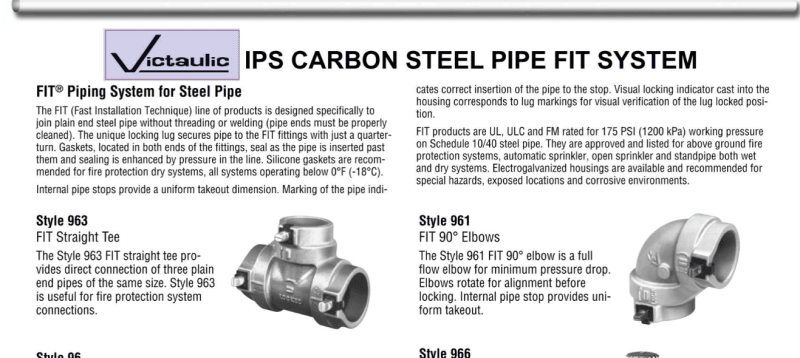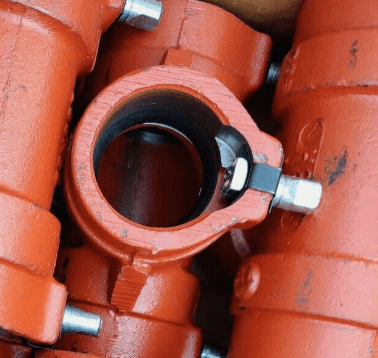klyu
Mechanical
- Jan 31, 2024
- 3
I'm a fairly recent hire for maintenance engineering for facility contracting. I have little to no knowledge on fire protection and water systems.
I was tasked with a research assignment on the fire protection systems and the fittings currently being used. Recently and incident occurred where a fitting failed and caused a serious leak flooding the 1st and 2nd floors of a building. The Fitting that failed was a Victaulic Style 963(Fast installation tee) in my preliminary research I found that these were developed in 1978 and discontinued in 2005. The fitting has failed one additional time in another building in 2013. The current facilities use carbon steel piping with schedule 40 and schedule 80 with about 1' by 1 1/2' by 1 1/2'. I've noticed that we like the use the quick installion fittings.
I have contacted Victaulic's Engineering department, but they don't really give me straight answers.
My general question is does anyone have any familiarization with Victaulic Fire Protection fittings.
What is the general failure rate?
When a fitting is removed is it safe to put the same fitting back on? It has a little rubber sealant.
What are the general thoughts on quick installtion fittings.
What is the frequency of inspections that should be performed if any?
Is there a way to check the seal without removing the fititng?
Just looking for some general advice or a nudge in the right direction
definitely have noticed I am completely unprepared for this job and its responsibilities and the company im working trying to penny pinch its way out of all of the problems
Any help would be great and any suggestions about the questions I should be asking would be great thank you
I was tasked with a research assignment on the fire protection systems and the fittings currently being used. Recently and incident occurred where a fitting failed and caused a serious leak flooding the 1st and 2nd floors of a building. The Fitting that failed was a Victaulic Style 963(Fast installation tee) in my preliminary research I found that these were developed in 1978 and discontinued in 2005. The fitting has failed one additional time in another building in 2013. The current facilities use carbon steel piping with schedule 40 and schedule 80 with about 1' by 1 1/2' by 1 1/2'. I've noticed that we like the use the quick installion fittings.
I have contacted Victaulic's Engineering department, but they don't really give me straight answers.
My general question is does anyone have any familiarization with Victaulic Fire Protection fittings.
What is the general failure rate?
When a fitting is removed is it safe to put the same fitting back on? It has a little rubber sealant.
What are the general thoughts on quick installtion fittings.
What is the frequency of inspections that should be performed if any?
Is there a way to check the seal without removing the fititng?
Just looking for some general advice or a nudge in the right direction
definitely have noticed I am completely unprepared for this job and its responsibilities and the company im working trying to penny pinch its way out of all of the problems
Any help would be great and any suggestions about the questions I should be asking would be great thank you


